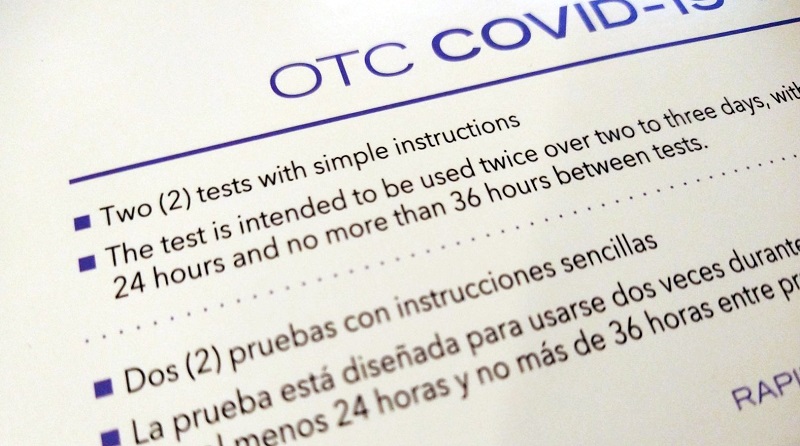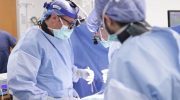
Stamford, CT – Today, Mayor Simmons announced plans to distribute approximately 6,500 COVID-19 at-home rapid test kits, which total 13,000 tests, to Stamford residents to continue to curb the spread of COVID-19 here in Stamford.
This is the second allocation from the State. The first distribution occurred on Sunday, January 2nd when 20,000 tests were distributed.
This next distribution of these kits is scheduled for tomorrow Saturday, January 8th, 2022. The City of Stamford will be holding three distribution locations:
- Walk-up site at Bethel AME Church (150 Fairfield Avenue)
- Drive-thru/walk-up site at Cummings Park (Shippan Avenue)
- Drive-thru/walk-up site at Rippowam Middle School (381 High Ridge Road)
For those who live within walking distance, please consider walking to these sites to alleviate traffic conditions. Distribution will begin at 12:00 P.M., until supplies last. This distribution is for Stamford residents only.
The walk-up at Bethel AME, distribution will occur in front of the Church on Fairfield Avenue. Residents should line up extending North on Fairfield Avenue towards Richmond Hill Avenue. You must have proof of residency.
The entry point for the Cummings Park location is Shippan Avenue Northbound only. You must have your license or other proof of residency.
The entry point for the Rippowam Middle School location is High Ridge Road, Northbound right-hand lane, enter from the Southernmost driveway. You must have your license or other proof of residency.
Test distribution continues to be focused for those high risk and socially vulnerable residents and where high rates of COVID-19 have been contracted; to those individuals enrolled in the home bound program; for the senior population 65 years old and older; for residents that are symptomatic or that have a known exposure to someone who tested positive. As supplies continue to be limited at this time, residents will receive 1 test kit, which is 2 tests, per household. If you have already received a test kit that you have not needed to use, please refrain from taking another to allow others in need to obtain a kit.
“COVID-19 cases and hospitalizations are extremely high. Testing and vaccines are the most important part of the strategy to reduce the spread of this virus. The distribution of these test kits to our residents assist us in combatting this public health emergency.” said Mayor Caroline Simmons. “I encourage residents who were unable to receive at-home tests last weekend to visit one of these three sites on Saturday. I continue to encourage residents to get their vaccination and boosters so we can reduce the spread of the COVID-19.”
Residents are reminded that the quantity of tests received from the State is limited.
“For fully vaccinated people 12 and older that are eligible for a booster, please get one as soon as possible. For all school-age children 5 and older that are not vaccinated yet, please get vaccinated. Vaccinations saves lives and reduce risk to keep people who get COVID-19 out of the hospital,” stated Dr. Henry Yoon, Medical Advisor for the City of Stamford.
“The demand for testing is still extremely high and the scarcity of home tests still exists. It is recommended that residents come to the distribution locations to get tests only if needed so that distribution can be to as many residents in need as possible.” Jody Bishop-Pullan the Stamford Director of Health stated. “We also have increased PCR testing capacity. Residents can make an appointment at our new South End location by visiting the City of Stamford website at www.StamfordCT.gov or to find one of the other testing locations.”
The Connecticut Department of Public Health is in the process of adding more community testing sites to its current roster of 23 state-sponsored sites. Information on the approximately 400 COVID-19 testing sites currently operating in Connecticut is available by calling 2-1-1 or visiting 211CT.org.
Dr. Asha Shah, Stamford Hospital’s director of Infectious Diseases, offers the following information if you test positive for COVID-19 at home:
1. Assume the positive result is accurate and that you are contagious.
You’ve been hearing over and over that PCR tests are the gold standard in COVID-19 testing, but a positive on an antigen test is very accurate if you have symptoms. Antigen tests are not perfect, but you can assume you have COVID-19 if you get a positive result from your at-home test.
2. If you have mild symptoms, stay at home and isolate as best you can.
We know this is not always possible, especially if you live in close quarters and are caring for family members. Try, however, to isolate yourself immediately. Wear a mask at all times if you can’t avoid interaction completely. If you have the space, stay in a separate room, preferably with its own bathroom.
3. Understand what isolation means.
This bears repeating as the isolation requirements have changed throughout the pandemic. Right now, the CDC recommends an isolation period of 5 days regardless of vaccination status from the start of symptoms, or if you have no symptoms, from the date of your positive test result. It is important to note that you can stop isolating after 5 days only if you have no symptoms or your symptoms are resolving. Please wear a mask around others for the 5 days after that.
If you have school-aged children, please check with the school or daycare as they may set their own rules for quarantine and isolation.
4. Call your recent close contacts.
Reach out to everyone you were recently in close contact with and let them know you tested positive for COVID-19 so they can take any necessary precautions for themselves.
5. Monitor your symptoms and get medical attention, if needed.
Most of the time, supportive care (rest and relaxation) is the only treatment you’ll need to recover from COVID-19. Most cases of COVID-19 will not require a hospital visit or stay, especially if you are vaccinated. Be sure to keep hydrated, eat healthy, even if you have little to no appetite, and rest.
If you feel as though your symptoms are worsening, or if you are concerned for any reason, let your doctor know. If you have an underlying condition that puts you at risk for complications, contact your doctor, even if you feel ok. This may be a good opportunity to take advantage of virtual care options and schedule a telehealth appointment.
If you are having trouble breathing, go to the nearest emergency room or call 911 immediately.
6. End your isolation once it’s safe to do so.
Hopefully after 5 days, your symptoms will begin to improve. It’s also important to think about testing your household members, even if they have no symptoms. They will need to isolate if they test positive, even if you are coming out of isolation yourself.
7. Get your booster shot if you haven’t already.
Natural immunity alone is no guarantee that you will be protected against reinfection or severe complications from reinfection in the future. Remember, it is possible to get COVID-19 more than once. If you are not vaccinated or boosted, please get the shot. Ask your doctor how much time you need to wait in between recovering from COVID-19 and getting vaccinated.
Finally, what’s the difference between “quarantine” and “isolation?”
- You quarantinewhen you have been exposed to COVID-19 and may or may not have been infected.
- You isolatewhen you are sick with COVID-19 or have tested positive, even if you don’t have symptoms.
Learn more about quarantine and isolation guidelines on the CDC website.
Residents who have not been vaccinated should get their COVID-19 vaccine and/or booster now and can do so by visiting: ct.gov/covidvaccine.




